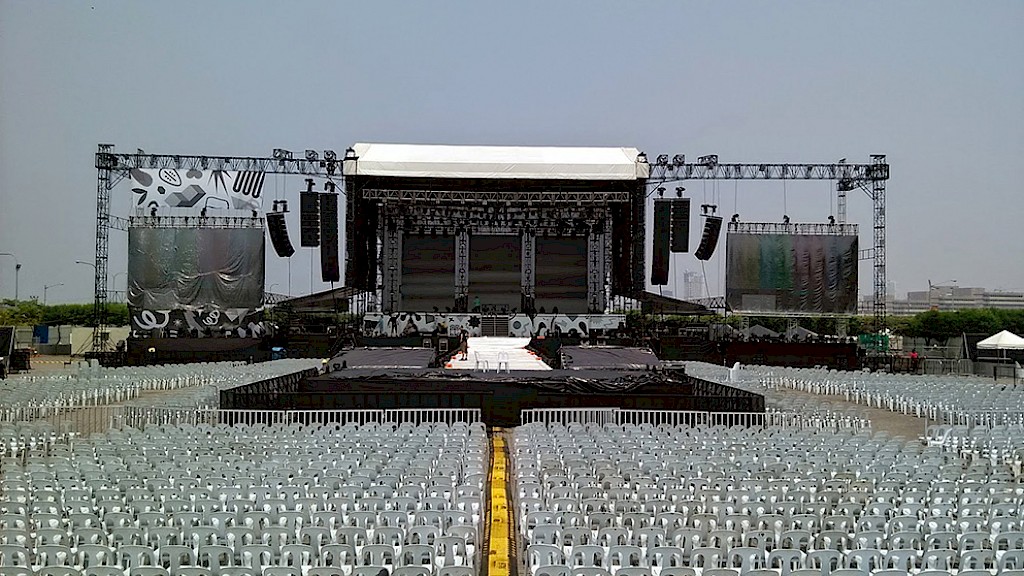Are there differences between theater/arena speakers and home speakers?
It’s a case of “different strokes for different folks.” Speakers that create sound in a theater, arena or stadium have different obstacles to overcome and require different solutions than speakers that recreate that experience in the home.
Theater/arena speakers are designed to produce the musical event, not to reproduce the event in your room. They must provide the full musical content – and all that implies – over much larger listening areas than home speakers.
Ideally, the listeners on the far right should hear nearly the same performance as the listeners on the far left. This just about eliminates the possibility of a full stereo image in most of the front row seats; despite the high cost of those tickets, those folks are likely to get just some hard right and hard left effects rather than a broad left/right sonic vista. Seats in the center and also the seats farther back can enjoy a better soundscape on a well-designed system. Those planning theater/arena systems rightly believe that it is more important for everyone to hear everything than have some listeners enjoy a decent stereo effect while others miss out on some of the music. So, mono dominates in this application.
Front to back presents another problem. The listeners in the first ten rows should hear all the same things as the listeners in the last ten rows, and only a bit louder. The distance between these areas can be hundreds of feet. So, the sound reaching the farthest seats must start much louder than the sound reaching the closest seats.
Today, this is mostly done with very tall line-arrays that have very controlled vertical dispersion. The top sections of the array play much louder and fire over the heads of the front listeners. In an open arena where you get no reinforcement from the non-existent ceiling, fill speakers maybe added located far from the main array. There is a time delay in their signal to synchronize the fill speakers’ output to the main array’s.
High efficiency is of equally great importance to unusual dispersion. “Loud is beautiful” in the sound reinforcement business because these are very, very big rooms – some where, literally, the sky is the limit. Subtle differences in accuracy or distortion are much less important than playing loud enough with a reasonable amount of power. A 500 watt amplifier is considered big for most home systems. The Barclay Center in Brooklyn, where I live, has over 200,000 watts of amplifier power for their sound system. If their speakers were same efficiency as typical home speakers, The Barclay Center would need more than a million watts!
Just as in homes, rooms still have a major impact on the overall sound. After operating for a couple years, the Barclay Center had to add 1800 absorbent panels to reduce reflections off the ceiling. It made a very audible improvement. Now they are growing a green roof to reduce sound transmission, both to reduce background noise in the hall and to be better neighbors!
Problems for home speakers are similar, but on a smaller scale. People sitting on the left and right should enjoy the same experience as the people in the middle. But, they should also be able to enjoy good stereo imaging. In the home, accuracy becomes more important than efficiency since we know sonic character a violin but not that of a synthesizer while power is cheap. It is the difference between creating music and reproducing music. So, ultimately, the speaker and the entire acoustic package must match the end use and user. Different needs spawn different solutions.
See ya on the 19th.
‘til then,
Enjoy & Good Listening,
John
Subscribe to Ohm News & Views to get the latest posts in your inbox
John Strohbeen Author
John Strohbeen was the President and Chief Engineer of Ohm Acoustics from 1978-2023.


